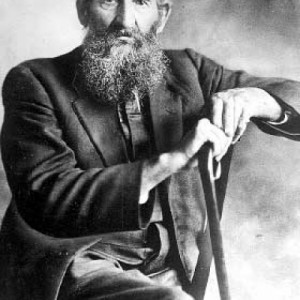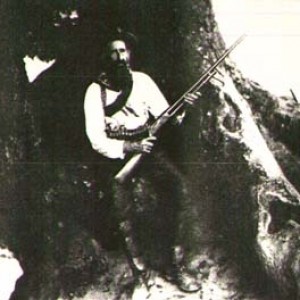I have no way of knowing how much of the tripe in the linked article, which begins on page 18, is a result of ignorance and how much is dishonesty. Since it appears in a religious magazine, I guess I’ll just leave it up to God to sort it out.
I used to wonder how the first feud writers could have been ignorant of the existence of the public records when they wrote the original yarn in 1888. When I see stuff written in 2016 that is flatly contradicted by the records, I am dumbfounded!
The Hatfields get the worst of it in all the tales, from 1888 to the present. This one has Devil Anse a horse-thief in his younger days, saying that at the end of the Civil War, Ran’l McCoy “filed a lawsuit alleging that Devil Anse had stolen his horse.”
Either this writer, Mr. Ken Walker, does not know that all such lawsuits are in the records, or he just doesn’t give a hoot about truth. The attached is from the index of all Pike County lawsits from 1830 to 1910. There are several suits with a plaintiff named Randolph McCoy, but none with a defendant named Anse Hatfield. Mr. Walker’s lawsuit is pure fiction.

The article says that the early photos of Anse always had a gun, but after his epiphany, Anse was never seen with a gun again. According to Coleman Hatfield, this photo of Anse was taken a dozen years before he got religion. He is armed with a cane.

According to Coleman Hatfield, this photo shows the old Rebel a few years after Uncle Dyke dunked him in Island Creek. He’s packing a Winchester.

Here’s the regenerated old Devil in a publicity shot for his 1915 motion picture. He ain’t just testifyin’!

Coleman Hatfield says that the local papers reported Devil Anse coming to a theater where his movie was playing in 1915, carrying his Winchester. (Tale of the Devil, p. 259)
Coleman Hatfield wrote that Devil Anse, a year after he was baptized, had his rifle across his knees in the courtroom where his son, Willis was being tried. (TOTD, p. 273) You just can’t make this stuff up!
Here are some facts about William Anderson “Devil Anse” Hatfield:
He lived for fifty-six years after the Civil War ended. He was accused of leading the mob that lynched the three McCoys on August 9, 1882. He was never tried and convicted of that crime. He adamantly denied it until he died. He never admitted guilt during the ten years after he was baptized. The only sworn testimony connecting him to that crime came from two men who “turned state’s evidence” to save their own necks. They admitted in court that they were living in the home of “Uncle Ran’l and Aunt Sally McCoy” at the time they testified.
Anse Hatfield was never even accused of participating in the arson and murders of January 1, 1888. Not even by Ran’l or Sally McCoy. Although charged with various minor offenses–mostly relating to illicit liquor–Anse Hatfield was never accused of harming a single human being, except for the three lynched McCoys.
Anse Hatfield was unlettered, but he had the Hatfield brains. He actively supported the publication of the idea that he was a man not be trifled with during the final three decades of his life, in order to cause potential bounty hunters to think twice before coming to Island Creek.
I think there are some dry bones in the woods of Island Creek, belonging to bounty hunters who came looking for him and found him, but I can’t prove it. Neither can anyone prove the other murders charged to him.
Anse Hatfield was wise to avoid being tried in Pikeville. All you have to do is look at the record of Wall’s case to see that a fair trial for Anse would have been impossible. The Court of Appeals said that Wall gave the order to shoot the McCoy brothers. They said he gave the order from the VIRGINIA side of the river. They didn’t even know what state Wall was in, but they knew that he was the commander of the venture.
By his own testimony, Wall Hatfield was–by the law– guilty of being an accessory. It is also apparent that he considered himself blameless. He obviously tried to prevent the killings. The only alternative interpretation is that he was stupid.
If the Kentucky gang would make Wall the leader of the Hatfield gang in order to try to hang him, there is no limit to which they would not have gone to hang Anse.
I personally believe that Anse Hatfield was in charge of that lynching. I also know that there were hundreds of white men lynched during the last third of the nineteenth century, and that the leaders of many–if not most–of those lynch mobs were leading citizens of their communities, who suffered no punishment for their actions.
According to the Tuskeegee Institute, 64 white men were lynched in 1882. Three of them were Tolbert, Pharmer and Bud McCoy. Nobody knows who the other 61 were.
Among the many questions I had after reading that article is: “Did poor Ol’ Ran’l McCoy get saved, too? It’s hard to grasp the idea that, after all he suffered in this vale of tears, Ol’ Ran’l ultimately went to Hell. If I find out anything about Ran’l’s final destination, I’ll put it in the blog. There’s not a bit of information on that subject in the current magazine article. It just doesn’t seem right for Devil Anse to be strolling down gold–plated streets while poor Ol’ Ran’l is “weeping and wailing and gnashing his teeth,” but who am I to judge?………………….To be continued…………….